 Nokia has announced three more Nokia N series multimedia devices, the Nokia N92 (the world’s first mobile device with a built-in DVB-H receiver), the Nokia N71 and the Nokia N80.
Nokia has announced three more Nokia N series multimedia devices, the Nokia N92 (the world’s first mobile device with a built-in DVB-H receiver), the Nokia N71 and the Nokia N80.
All three multimedia -tastic handsets support all GSM bands, 3G, WLAN, corporate email access and advanced voice functionality (including IP PBX connectivity over WLAN), and come with integrated security features.
Nokia N92
Most interesting is the Nokia N92, which has the honour of being the world’s first mobile device with a built-in DVB-H receiver, letting users watch and record live TV on the move.
A curious swivelling, flip-top affair, the N92 comes with a large (2.8″) anti-glare QVGA screen supporting 16 million colours and dedicated media keys
The Nokia N92 sports a shedload of functionality for watching and searching for TV programs, with an Electronic Service Guide (ESG) offering information about available TV channels, programs and services
 Using the built in software, users can also create personal channel lists, subscribe to TV-channel packages, set program reminders and interact through services such as voting, program feedback and additional web discovery.
Using the built in software, users can also create personal channel lists, subscribe to TV-channel packages, set program reminders and interact through services such as voting, program feedback and additional web discovery.
For web surfing, the Nokia N92 comes with the new Nokia Web Browser with Mini Map, which displays a semi-transparent zoomed-out view of a web page, enabling users to quickly zip about a large page on a small screen.
Branded as a Nokia XpressMusic device, the handset offers up to 2 GB memory card support, and ships with built-in stereo speakers and stereo headset.
The N92 also comes with a digital music player, FM radio with Visual Radio support (providing interactive information on playing songs and artists) and an onboard 2 megapixel camera.
Connectivity is ably taken care of with Wi-Fi, infrared, Bluetooth and USB 2.0 support.
Based on S60 3rd Edition and Symbian OS, the Nokia N92 is expected to be in the shops by mid 2006 in Europe, with a price tag around €600.
Nokia N80
 Sporting WLAN and 3G, the Nokia N80 is being touted as the world’s first handset to feature UPnP technology, and has the ability to be used as a remote control for wirelessly swapping content between PCs, audio equipment and TVs.
Sporting WLAN and 3G, the Nokia N80 is being touted as the world’s first handset to feature UPnP technology, and has the ability to be used as a remote control for wirelessly swapping content between PCs, audio equipment and TVs.
So long as all the gear is compatible, images and video stored on a Nokia N80 can be viewed on a TV, while MP3s on the handset can be played through an audio system.
 Photos snapped on the Nokia N80 can also be printed wirelessly to any UPnP-enabled printer or photo kiosk.
Photos snapped on the Nokia N80 can also be printed wirelessly to any UPnP-enabled printer or photo kiosk.
Nokia N80 is also the first quadband handset designed to work on 3G (WCDMA 1900 or 2100), WLAN, EDGE and four GSM bands (850/900/1800/1900).
The phone features a sliding design with a high definition, 352 x 416 pixels display.
There’s a hefty 3 megapixel camera with capture key, full-screen landscape capture, a close-up mode switch and CIF video capture with inbuilt video stabilisation.
 Storage comes in the form of 40 MB of internal memory, with support for miniSD cards of up to 2 GB.
Storage comes in the form of 40 MB of internal memory, with support for miniSD cards of up to 2 GB.
The Nokia N80 has a built in digital music player and stereo FM radio with Visual Radio support.
Available in the first quarter of 2006, the price is expected to be €500.
Nokia N71
Finally, we come to the N71, another member of the Nokia XpressMusic family.
Billed as a “pocket-sized entertainment system”, the Nokia N71 comes with a stereo FM radio, support for digital music and videos and new Nokia Web Browser with Mini Map.
 We could only find a teensy-weensy picture of the 3G clam phone as we went to print, but we can tell you that is has two displays and two cameras, one of which is a 2-megapixel camera.
We could only find a teensy-weensy picture of the 3G clam phone as we went to print, but we can tell you that is has two displays and two cameras, one of which is a 2-megapixel camera.
Speaking at the Nokia Mobility Conference, Nokia Chairman and CEO Jorma Ollila bigged up digital convergence:
“We expect the market for convergence devices to double to 100 million units in 2006. Developers, media companies and enterprises are shifting their focus to Nokia’s S60 smartphone platform, as they see the business potential of using it to offer content and ensure secure remote access to corporate applications”
“Convergence is opening up a world of opportunities for our customers and partners, and Nokia is committed to developing the tools, solutions and products to make the promise of the digital industry a reality,” Ollila added.
Nokia
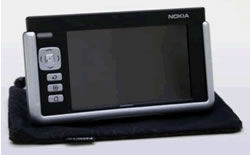 We first reported the news of the existence of the Nokia 770 back in May 2005, when Janne Jormalainen, Vice President of Convergence Products, Multimedia at Nokia showed it to a slightly stunned crowd at LinuxWorld Summit in New York. Now it’s shipping.
We first reported the news of the existence of the Nokia 770 back in May 2005, when Janne Jormalainen, Vice President of Convergence Products, Multimedia at Nokia showed it to a slightly stunned crowd at LinuxWorld Summit in New York. Now it’s shipping.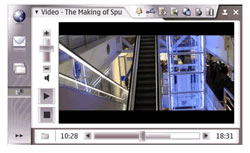 Well today, Nokia are announcing its actual availability and they’ve expanded its capabilities to enable Web browsing using Bluetooth via your mobile.
Well today, Nokia are announcing its actual availability and they’ve expanded its capabilities to enable Web browsing using Bluetooth via your mobile.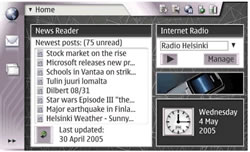 For Linux hackers everywhere, there’s the great excitement that the 770 will be running Debian Linux, with the new platform – derived from the Linux GNOME UI – going under the name “maemo”. Development on maemo has continued since May and the end of October saw the release of maemo 1.1 Release Candidate 5. They’ve even given it the fancy new name of Nokia Internet Tablet 2005, if you please.
For Linux hackers everywhere, there’s the great excitement that the 770 will be running Debian Linux, with the new platform – derived from the Linux GNOME UI – going under the name “maemo”. Development on maemo has continued since May and the end of October saw the release of maemo 1.1 Release Candidate 5. They’ve even given it the fancy new name of Nokia Internet Tablet 2005, if you please. VoIP was hinted at back in May. It’s now been confirmed by our old mate Janne Jormalainen, “During the first half of year 2006 we will launch the next operating system upgrade to support more presence based functionalities such as VoIP and Instant Messaging.”
VoIP was hinted at back in May. It’s now been confirmed by our old mate Janne Jormalainen, “During the first half of year 2006 we will launch the next operating system upgrade to support more presence based functionalities such as VoIP and Instant Messaging.”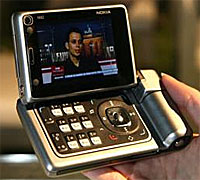 Nokia has announced three more Nokia N series multimedia devices, the Nokia N92 (the world’s first mobile device with a built-in DVB-H receiver), the Nokia N71 and the Nokia N80.
Nokia has announced three more Nokia N series multimedia devices, the Nokia N92 (the world’s first mobile device with a built-in DVB-H receiver), the Nokia N71 and the Nokia N80. Using the built in software, users can also create personal channel lists, subscribe to TV-channel packages, set program reminders and interact through services such as voting, program feedback and additional web discovery.
Using the built in software, users can also create personal channel lists, subscribe to TV-channel packages, set program reminders and interact through services such as voting, program feedback and additional web discovery. Sporting WLAN and 3G, the Nokia N80 is being touted as the world’s first handset to feature UPnP technology, and has the ability to be used as a remote control for wirelessly swapping content between PCs, audio equipment and TVs.
Sporting WLAN and 3G, the Nokia N80 is being touted as the world’s first handset to feature UPnP technology, and has the ability to be used as a remote control for wirelessly swapping content between PCs, audio equipment and TVs.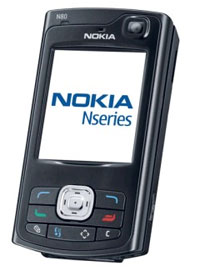 Photos snapped on the Nokia N80 can also be printed wirelessly to any UPnP-enabled printer or photo kiosk.
Photos snapped on the Nokia N80 can also be printed wirelessly to any UPnP-enabled printer or photo kiosk. Storage comes in the form of 40 MB of internal memory, with support for miniSD cards of up to 2 GB.
Storage comes in the form of 40 MB of internal memory, with support for miniSD cards of up to 2 GB.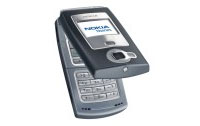 We could only find a teensy-weensy picture of the 3G clam phone as we went to print, but we can tell you that is has two displays and two cameras, one of which is a 2-megapixel camera.
We could only find a teensy-weensy picture of the 3G clam phone as we went to print, but we can tell you that is has two displays and two cameras, one of which is a 2-megapixel camera.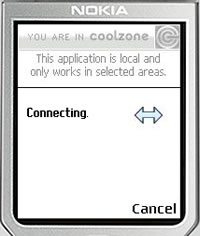 Today Nokia announced CoolZone, a Bluetooth-based distribution system that lets mobile phone users locally browse, pay for and download content on their mobiles while they are in shops supporting it.
Today Nokia announced CoolZone, a Bluetooth-based distribution system that lets mobile phone users locally browse, pay for and download content on their mobiles while they are in shops supporting it.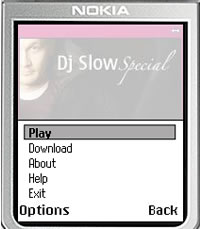 As the user of the service needs the user to download an application to use the service, we can imagine little hacking groups are already forming plans to hang around near these shops offering their own ‘applications’ with similar names to unsuspecting, or inexperience users.
As the user of the service needs the user to download an application to use the service, we can imagine little hacking groups are already forming plans to hang around near these shops offering their own ‘applications’ with similar names to unsuspecting, or inexperience users.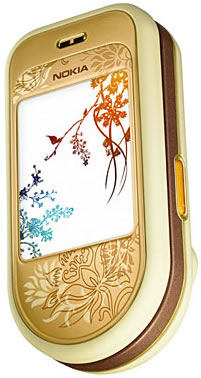 Mobile phone giants Nokia have announced three new phone models aimed at the “style-conscious” market.
Mobile phone giants Nokia have announced three new phone models aimed at the “style-conscious” market.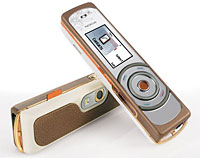 Desperately described as a phone for “trend-setting men and women who enjoy being the centre of attention,” the highly distinctive 7380 looks like it’s come from the same bonkers design studio as the
Desperately described as a phone for “trend-setting men and women who enjoy being the centre of attention,” the highly distinctive 7380 looks like it’s come from the same bonkers design studio as the 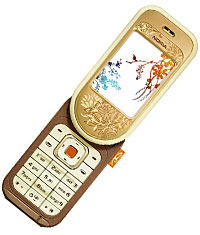 Employing a sliding keypad, the Nokia 7370 comes with a 2-inch QVGA colour screen (320 x 240 pixels), stereo speakers with 3D sound effects and a 1.3 megapixel camera (8x zoom) onboard.
Employing a sliding keypad, the Nokia 7370 comes with a 2-inch QVGA colour screen (320 x 240 pixels), stereo speakers with 3D sound effects and a 1.3 megapixel camera (8x zoom) onboard.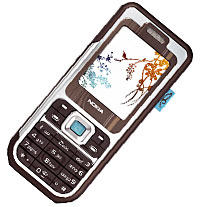 Nokia 7360
Nokia 7360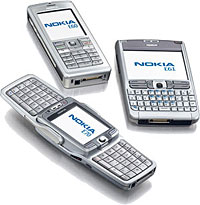 Nokia has announced the Eseries phones, a new range of devices designed for swivel action execs and be-suited business bods.
Nokia has announced the Eseries phones, a new range of devices designed for swivel action execs and be-suited business bods.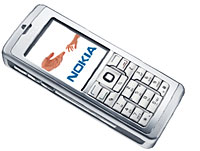 The devices are the first in the industry to support remote device management based on OMA DM*, letting IT managers remotely control and protect corporate data on the device and fiddle about with phone configurations. Or just have a good nose about.
The devices are the first in the industry to support remote device management based on OMA DM*, letting IT managers remotely control and protect corporate data on the device and fiddle about with phone configurations. Or just have a good nose about.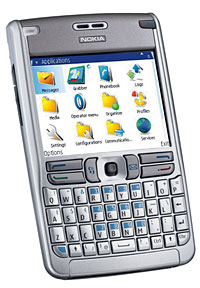 Nokia E61 (right)
Nokia E61 (right)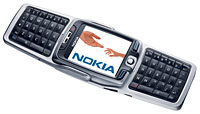 Nokia E70 (left)
Nokia E70 (left) The UK production and development community is in danger of losing out to competition from overseas if it doesn’t wake up to the potential of mobile TV, said Mark Selby, Nokia’s Global Vice President for Multimedia, (pictured right) at the inaugural Mobile TV forum in London today.
The UK production and development community is in danger of losing out to competition from overseas if it doesn’t wake up to the potential of mobile TV, said Mark Selby, Nokia’s Global Vice President for Multimedia, (pictured right) at the inaugural Mobile TV forum in London today.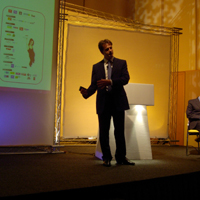 But many claimed that the lack of spectrum is holding DVB-H back in the UK.
But many claimed that the lack of spectrum is holding DVB-H back in the UK. Digital One owns the UK’s only nationwide commercial DAB multiplex – but the capacity allocated for DMB is minimal.
Digital One owns the UK’s only nationwide commercial DAB multiplex – but the capacity allocated for DMB is minimal.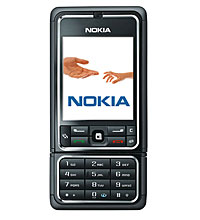 Finnish mobile giants Nokia have come up with the Nokia 3250, a new music-driven mobile phone featuring dedicated music keys and storage for up to 750 songs.
Finnish mobile giants Nokia have come up with the Nokia 3250, a new music-driven mobile phone featuring dedicated music keys and storage for up to 750 songs.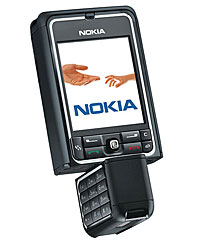 Songs can be converted from CD and transferred from home PCs using the “drag and drop” Nokia Audio Manager software.
Songs can be converted from CD and transferred from home PCs using the “drag and drop” Nokia Audio Manager software.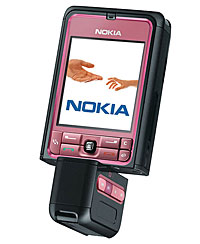 “Nokia connects people to their passions – music – and as the world’s largest manufacturer of digital music players, Nokia is leading the charge to make mobile music widely accessible. The XpressMusic feature brand, also introduced today, makes it easier for consumers to identify those Nokia devices which are specifically designed to listen to music,” purred Kai Öistämö, Senior Vice President, Mobile Phones, Nokia.
“Nokia connects people to their passions – music – and as the world’s largest manufacturer of digital music players, Nokia is leading the charge to make mobile music widely accessible. The XpressMusic feature brand, also introduced today, makes it easier for consumers to identify those Nokia devices which are specifically designed to listen to music,” purred Kai Öistämö, Senior Vice President, Mobile Phones, Nokia.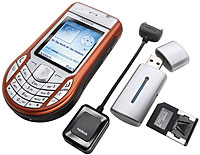 Acting like they’re fearful of not appearing hip to the mobile music revolution, Nokia have added their own rival to the Apple/Motorola ROKR and Sony Walkman phones, a special edition of the highly rated Nokia 6630 – despite having had music-playing on their phones for yonks.
Acting like they’re fearful of not appearing hip to the mobile music revolution, Nokia have added their own rival to the Apple/Motorola ROKR and Sony Walkman phones, a special edition of the highly rated Nokia 6630 – despite having had music-playing on their phones for yonks.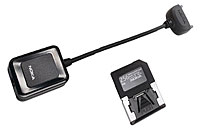 The phone comes in two colours – Aluminum Grey for hip, fast living, city slickers and Rustic Red for cow-bothering, straw chewing, country types.
The phone comes in two colours – Aluminum Grey for hip, fast living, city slickers and Rustic Red for cow-bothering, straw chewing, country types.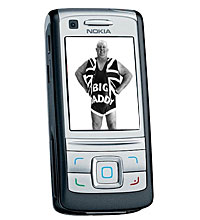 Nokia has risen to become King Of The Hill of 3G phones with a market share of 17%, with its attractive range of 3G phones trouncing products from rivals NEC and LG.
Nokia has risen to become King Of The Hill of 3G phones with a market share of 17%, with its attractive range of 3G phones trouncing products from rivals NEC and LG.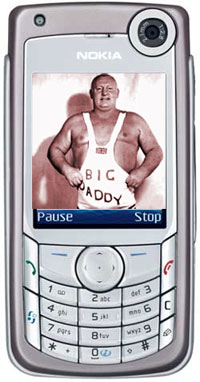 Previous 3G front-runners Motorola and LG have been overtaken by Nokia, with the report warning the manufacturers that they “have significant work to do to match up in the next battle for WCDMA phones priced below US$200 (~£111, €164~) wholesale, which will present significant mass-market opportunities in 2006 to 2010”.
Previous 3G front-runners Motorola and LG have been overtaken by Nokia, with the report warning the manufacturers that they “have significant work to do to match up in the next battle for WCDMA phones priced below US$200 (~£111, €164~) wholesale, which will present significant mass-market opportunities in 2006 to 2010”.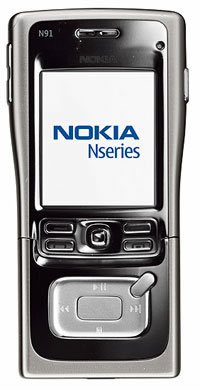 Speculation about
Speculation about  In a making-the-most-out-of-a-difficult-situation way, Kari went on to say, “But since this is based on a computer platform, anybody — including Apple if they so wish — can very easily develop this kind of application and offer it to consumers, via the Internet for example.”
In a making-the-most-out-of-a-difficult-situation way, Kari went on to say, “But since this is based on a computer platform, anybody — including Apple if they so wish — can very easily develop this kind of application and offer it to consumers, via the Internet for example.”